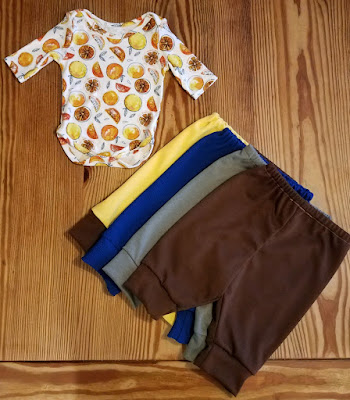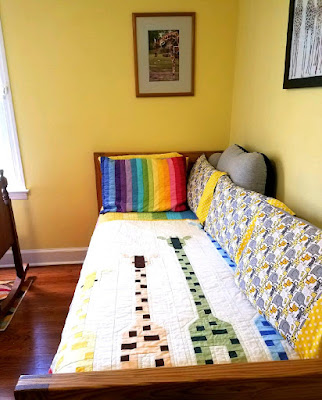As most of you reading these pages know, I was diagnosed with Stage IIIb melanoma in 2003, advanced to Stage IV in 2010 with brain and lung mets, subsequently enrolled in a Phase 1 Nivolumab (Opdivo) trial, taking nivo for 2 1/2 years. On what was to be my last follow-up scan in 2018, something was found in my appendix. Removal and biopsy indicated Stage II Ex-goblet cell adenocarcinoma of the appendix. Appendiceal cancer is very rare - found in only 1-2 people per million in the US. Of those, my type of appendiceal cancer is rarer still! I completed (almost) a three month, 4 dose regimen of adjuvant CAPOX (Capecitabine and Oxaliplatin).
Currently, that means I am ~
219 months (18 YEARS!!!!) post my original melanoma diagnosis in 2003 at the age of 39139 months Stage IV (11 and 1/2 years!!!)
133 months NED (well....for melanoma at least)
131 months after starting nivo (Opdivo)
101 months (more than 8 years) AFTER my last nivo infusion in June 2013.
I am also:
39 months post my diagnosis of adenocarcinoma ex-goblet cell carcinoid (GCC) and the removal of my appendix with its 10.5 cm tumor, my ascending colon including ileocecal valve, gall bladder and ovaries
36 months (3 years!) post completion of 3 months adjuvant CAPOX chemo for same
Then there's this:
Assessment of Trends in Second Primary Cancers in
Patients With Metastatic Melanoma From 2005 to 2016. Deng, Wang, Liu, et al. JAMA Dec 2020.
Importance: To date, the risk of developing second primary
cancers (SPCs) after the first primary melanoma has not been studied in the era
of immune checkpoint inhibitors (ICIs).
Objective: To assess differences in the risk of SPCs in
patients with primary melanoma before (2005-2010) and after (2011-2016) the
introduction and approval of ICIs.
Design, setting, and participants: Population-based cohort
study using the Surveillance, Epidemiology, and End Results database from
January 2005 to December 2016 of patients diagnosed with metastatic melanoma.
Data were analyzed from January 4 to June 30, 2020.
Exposures: Receipt of immunotherapy or other anticancer
agents.
Main outcomes and measures: The primary outcome was the
development of second primary cancers in patients with melanoma. Standardized
incidence ratios (SIRs) were calculated for the development of SPCs before and
after the introduction of ICIs.
Results: Among 5016 patients with diagnosed metastatic
melanoma, 2888 (58%) were younger than 65 years at the time of diagnosis,
and 3441 (69%) were male. From 2005 to 2010, SIRs were 3.24 for small intestine
cancer, 1.93 for lung and bronchus cancer, 2.77 for kidney cancer, and 7.29 for
myeloma. From 2011 to 2016, SIRs were 9.23 for small intestine cancer, 1.54 for
lung and bronchus cancer, 2.66 for kidney cancer, and 5.90 for myeloma. The
overall risk of developing SPCs in individuals who survived the first primary
melanoma was 65% higher in the pre-ICIs period and 98% higher in the post-ICIs
period than the overall cancer incidence rate in the general population.
Conclusions and relevance: In this study, an increase in the
overall risk of second primary cancers after melanoma after the introduction of
immune checkpoint inhibitors was observed. The pattern of SPCs has been altered
in the era of systemic therapy. Close monitoring and screening for SPCs may be
warranted in patients with metastatic melanoma.
Well damn! I think of you so often, my sweet Julie!!!! And that last sentence - "Close monitoring and screening for Second Primary Cancers may be warranted in patients with metastatic melanoma." Tell that to oncs and more importantly to insurance companies!!!!!!!!!!!!!!!!!!!!! Though - before anyone panics I will add these thoughts:
1. This study is not the end all be all.
2. When you are dealing with melanoma - especially Stage IV as I was - you are facing death or treatment. So, what choice is there, really? Besides, despite Stage IV melanoma, despite immunotherapy side effects, despite a second cancer and the side effects from that treatment - I'm Still Here!!!!!!!!
3. There are variables besides immunotherapy that have to be considered here as well -
a) The propensity of these patients to develop cancer - for whatever reason.
b) The 9 gazillion scans used as follow-up/treatment management in these patients.
c) The use of radiation in these patients as part of their treatment.
There may well be more, but those come to me at the moment. In cancer world, we know that treatment, though necessary, is not benign.
Next up -
Gotta say, I thought I was a beast when I got through my 2 1/2 year nivo trial. Working roughly 10-12 hours Mon, Tue, Wed as a pediatric NP in a busy office. Driving the two hours to Atlanta on Thursday morning to catch the flight down to Tampa that afternoon. Spending the night in the good ol La Quinta. Treatment at the butt crack of dawn on Friday. A mad dash back to the airport for the flight back to Atlanta. Two hour drive home. Usually arriving back in Chattown around midnight. Rinse and repeat every 2 weeks for 6 months, then every 3 months for 2 years, missing only 3 days of work during that time. Perhaps I was just insane. Check out this post-it note sent home to B from a dear coworker during that time: Friends in need are friends indeed! Here's to the caregivers!!! Still, for all the fatigue, wheezing, arthralgias, rashes and oral lesions - immunotherapy was a walk in the park compared to CAPOX. That shit kicked my ass - literally and figuratively! Now, there's this....
Is adjuvant chemotherapy beneficial for stage II-III
goblet cell carcinoid/goblet cell adenocarcinoma of the appendix? Zakka, Williamson, Jiang, et al. Surg Oncol.
2020 Dec.
Background: Goblet cell carcinoma (GCC), formerly known as
goblet cell carcinoid, of the appendix constitutes less than 14% of all primary
appendiceal neoplasms. Surgical resection is the main treatment and the role of
adjuvant chemotherapy (AC) is not established. This study aims to evaluate the
impact of AC in stage II-III appendiceal GCC.
Methods: Patients with pathological stage II and III GCC who
underwent surgical resection between 2006 and 2015 were identified from the
National Cancer Database (NCDB) using ICD-O-3 morphology and topography codes:
8243/3 (goblet cell carcinoid) and C18.1. Patients treated with neoadjuvant
systemic and/or radiation therapy and adjuvant radiation were excluded.
Univariate and multivariable analyses were conducted, and Kaplan-Meier Curves
were used to compare overall survival (OS) based on treatment received with
Log-rank test.
Results: A total of 619 patients [over 9 years!!!] were identified. 54.4%
males and 89.0% Caucasian; median age 56 (range, 23-90) years. Distribution
across pathological stages II-III was 82.7% (N = 512) and 17.3% (N = 107)
respectively. AC was administered in 9.4% (N = 48) of stage II and 47.7% (N =
51) of stage III patients. For stage II patients, AC was not associated with
better OS. By contrast, in stage III
patients, AC was associated with better OS. In the entire cohort 5-year OS for patients that received AC was
85.5% (74.0%, 92.1%) versus 82.7% (77.5%, 86.8%) with no AC. For
stage II patients, 5-year OS was 96.9% with AC vs. 89.1% with no AC. For stage III patients, 5-year OS was 77.1% with AC vs. 42.8% with no
AC.
Conclusion: AC was associated with improved OS in patients
with pathological stage III GCC of the appendix, but not with pathological
stage II.
Well, ain't that a bitch??!!! Now this -
Outcomes in Peritoneal Carcinomatosis from Appendiceal
Goblet Cell Carcinoma Treated with Cytoreductive Surgery and Hyperthermic
Intraperitoneal Chemotherapy (CRS/HIPEC). Zambrano-Vera, Sardi, Munoz-Zuluaga, et
al. Ann Surg Oncol. 2020 Jan 27.
Background: Appendiceal goblet cell adenocarcinoma (GCA) is
often misclassified and mistreated due to mixed histologic features. In
general, cytoreductive surgery plus hyperthermic intraperitoneal chemotherapy
(CRS/HIPEC) is standard of care for peritoneal carcinomatosis (PC) from mucinous
appendiceal tumors; however, in PC from GCA, data are limited and the role of
CRS/HIPEC is controversial. We report outcomes in PC from appendiceal GCA
treated with CRS/HIPEC.
Patients and methods: A prospective institutional database of 391 CRS/HIPEC patients with appendiceal carcinomatosis from 1998 to 2018 was reviewed. Twenty-seven patients with GCA were identified. Perioperative variables were described. Survival was estimated using the Kaplan-Meier method.
Results: GCA occurred in 7% (27/391) of appendiceal
CRS/HIPEC patients. Seven (26%) cases were aborted. Two patients underwent a
second CRS/HIPEC for peritoneal recurrence. Median age at diagnosis was 53
years (range 39-72 years), and 12 (60%) were female. All underwent previous
surgery. Seven (35%) had prior chemotherapy and received a median of 5 cycles
(range 3-8). Median PCI was 6 (range 1-39). Complete cytoreduction was achieved
in 95% (19/20). Grade III complications occurred in three (15%) patients, and
no perioperative deaths occurred. Median follow-up was 97 months. Overall
survival at 1, 3 and 5 years was 100%, 74% and 67%, respectively.
Progression-free survival at 1, 3, and 5 years was 94%, 67% and 59%,
respectively.
Conclusion: CRS/HIPEC should be considered as the main
treatment option for patients with PC from appendiceal GCA. When performed at a
CRS/HIPEC specialty center, 5-year OS of 67% can be achieved.
Poor peeps! I hope I never have to undergo that shit!!!! Man! Don't you love how researchers state things like "When performed at a CRS/HIPEC specialty center, 5-year OS of 67% can be achieved." - as though 33% of patients dying within 5 years is a good thing? Sigh.....
Y'all know I've been yelling for YEARS, as recently as earlier this month, about ctDNA use in melanoma - rather - how it SHOULD be used in melanoma!!! - A Zillion Posts Now, there's this -
Analysis of Plasma Cell-Free DNA by Ultradeep
Sequencing in Patients With Stages I to III Colorectal Cancer. Reinert, Henriksen, Christensen, et al. JAMA Oncol.
2019, May.
Importance: Novel
sensitive methods for detection and monitoring of residual disease can improve
postoperative risk stratification with implications for patient selection for
adjuvant chemotherapy (ACT), ACT duration, intensity of radiologic
surveillance, and, ultimately, outcome for patients with colorectal cancer
(CRC).
Objective: To
investigate the association of circulating tumor DNA (ctDNA) with recurrence
using longitudinal data from ultradeep sequencing of plasma cell-free DNA in
patients with CRC before and after surgery, during and after ACT, and during
surveillance.
Design, Setting, and Participants: In this prospective, multicenter cohort
study, ctDNA was quantified in the preoperative and postoperative settings of
stages I to III CRC by personalized multiplex, polymerase chain reaction–based,
next-generation sequencing. The study enrolled 130 patients at the surgical
departments of Aarhus University Hospital, Randers Hospital, and Herning
Hospital in Denmark from May 1, 2014, to January 31, 2017. Plasma samples
(n = 829) were collected before surgery, postoperatively at day 30, and every
third month for up to 3 years.
Results: A total of
130 patients with stages I to III CRC (mean age, 67.9 years; 74 male) were
enrolled in the study; 5 patients discontinued participation, leaving 125
patients for analysis. Preoperatively, ctDNA was detectable in 108 of 122
patients. After definitive treatment, longitudinal ctDNA analysis identified 14
of 16 relapses (87.5%). At postoperative day 30, ctDNA-positive patients were 7
times more likely to relapse than ctDNA-negative patients. Similarly, shortly
after ACT ctDNA-positive patients were 17 times more likely to relapse. All 7 patients who
were ctDNA positive after ACT experienced relapse. Monitoring during and after
ACT indicated that 3 of the 10 ctDNA-positive patients (30.0%) were cleared by
ACT. During surveillance after definitive therapy, ctDNA-positive patients were
more than 40 times more likely to experience disease recurrence than
ctDNA-negative patients. In all multivariate analyses, ctDNA status was
independently associated with relapse after adjusting for known
clinicopathologic risk factors. Serial ctDNA analyses revealed disease
recurrence up to 16.5 months ahead of standard-of-care radiologic imaging
(mean, 8.7 months; range, 0.8-16.5 months). Actionable mutations were
identified in 81.8% of the ctDNA-positive relapse samples.
Conclusions and Relevance:
Circulating tumor DNA analysis can potentially change the postoperative
management of CRC by enabling risk stratification, ACT monitoring, and early
relapse detection.
How could this not be a good thing, right???? So, I put my money where my mouth is. Several months ago, I had the Signatera - Circulating tumor DNA blood test done. The company analyzed a sample from my appendiceal tumor to create an assay generated by the mutations in my specific tumor to know what to look for in a simple blood draw. It was negative. Meaning - no bits or bobs of the tumor DNA they searched for was in my blood sample. This is in no way an advert for that particular company. (Though medical folks from the company answered ALL B's questions in several phone calls, so that is something!!!) This is simply a report of what I did, the research behind it, and how it went. I told B I ought to do a two-fer and have them look for melanoma as well as GCC!! Surprisingly, he was not amused! Such a party pooper! Poor boy.
So, to finish up 2021 with a bang, a couple of weeks ago, routine follow-up scans were clear - the strange ascites that keep jogging around with me was diminished, so that's good, I guess. Yesterday, I had a visit with my onc and labs (to follow relative proteins, iron, folate and such) drawn. An uneventful event, though I had to be stuck twice. Such is the life of a cancer patient. And to think - having had bilateral complete lymphadenectomies of both arms in 2003 and 2007 - I was told never to have so much as a blood pressure check in either. Well!!! That went out the window YEARS ago! I am moving to annual scans and doc visits with labs every 6 months. Clearly, I am to be seen sooner if I have any problems. Though how to ID said 'problems' is a little unclear. Leaving the visit, I told B I was tired of being a cancer patient. But, as quickly as I said it I realized that when you ARE a cancer patient, getting to be one for so many years is pretty lucky, no? Neuropathies to hands and feet continue. B religiously applies Voltaren to my feet each night. Again, not an advert. I'm not really sure it does anything, but he is convinced. We've tried a variety of things - icy hot type preparations, Blue emu something or other, a hemp oil ta-dah. These well and truly did nothing at all!!! I've learned to manage my bowel situation, though some days are better than others. I still run and sew and work and play. At the end of the day - especially at the end of THREE /18 crazy years - what more can one ask for?
Wishing each of you peaceful moments, much love, and a zillion small joys in the coming year. ~ les
And, yes. The observant among you will note that it took me a year to post the data included here. Sometimes it takes a minute to face your reality. And, yes. I am smiling. - c

















































